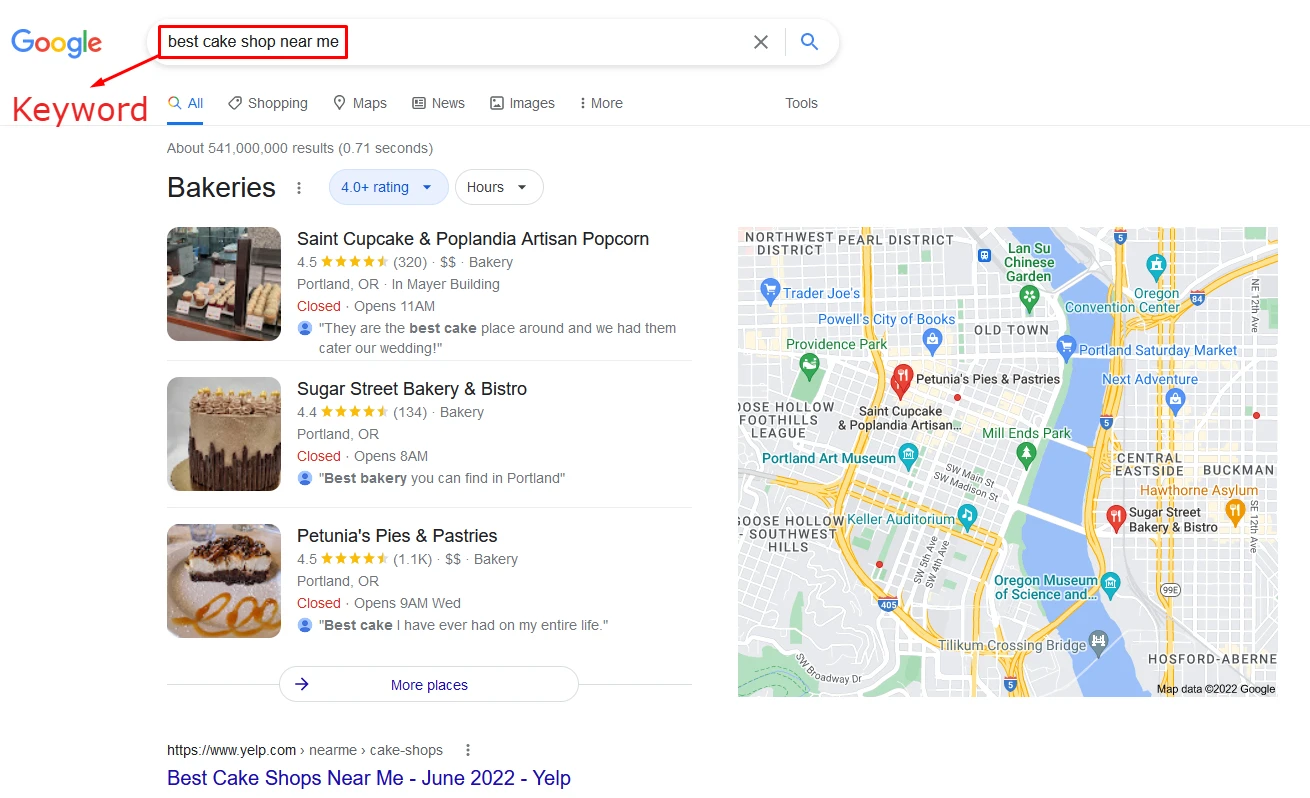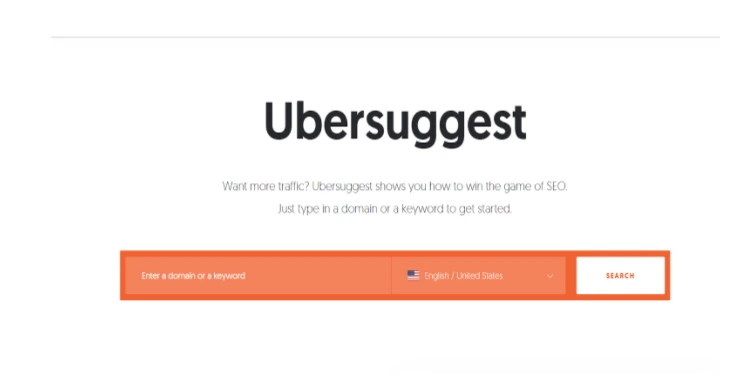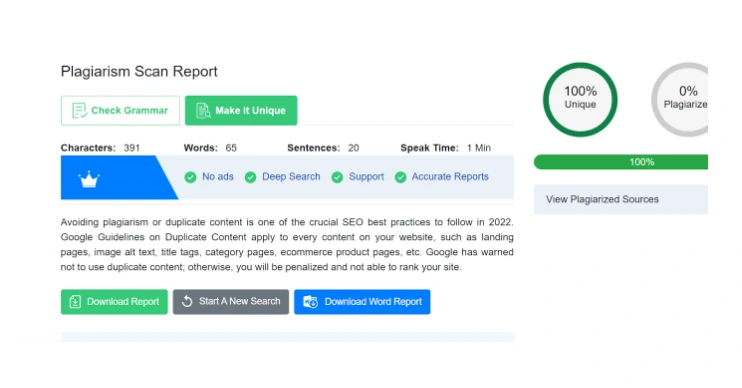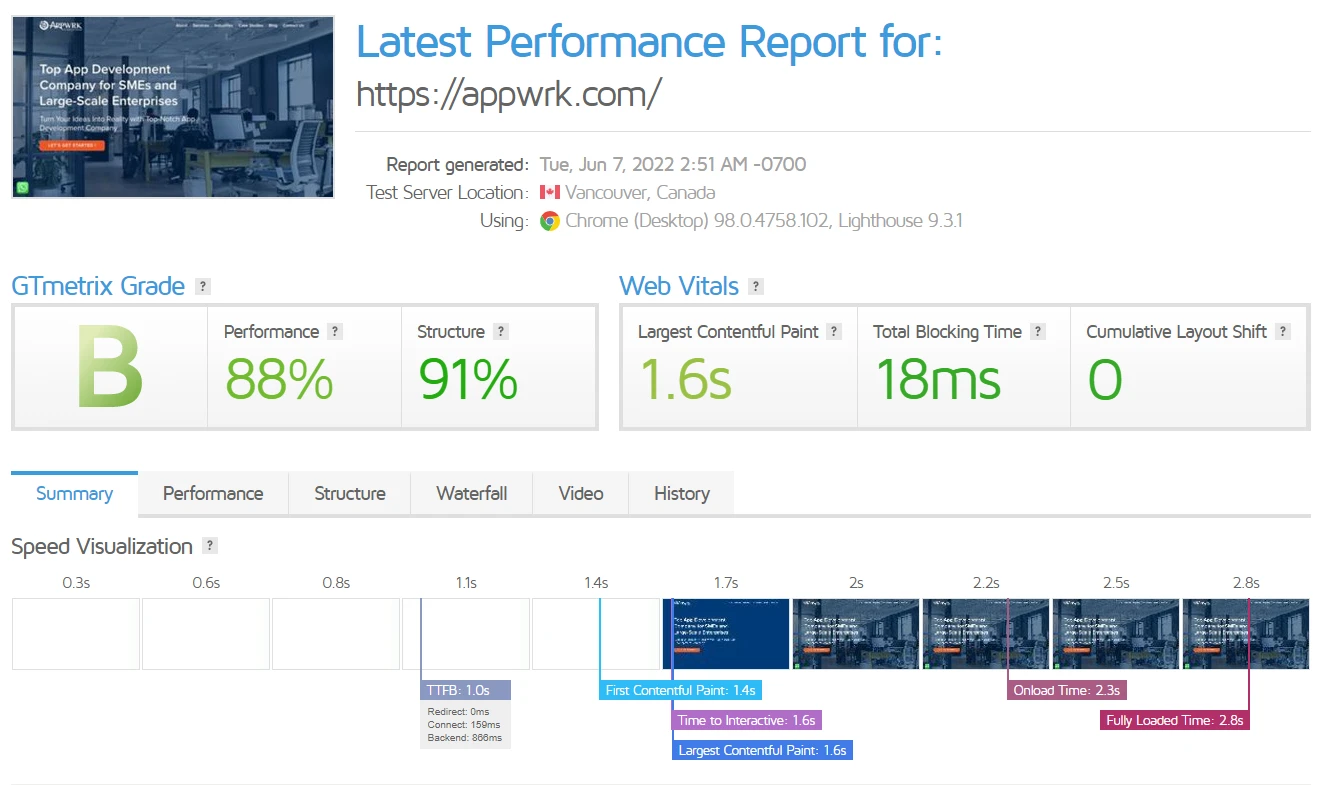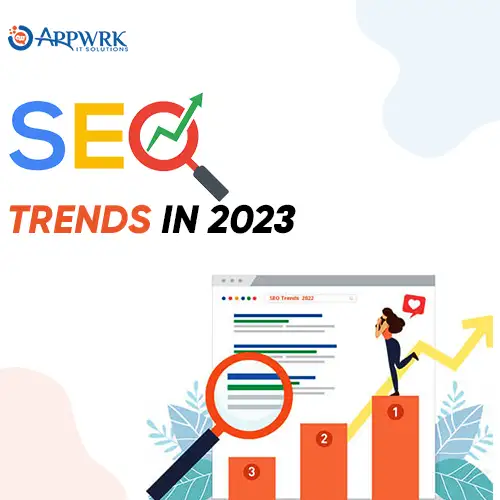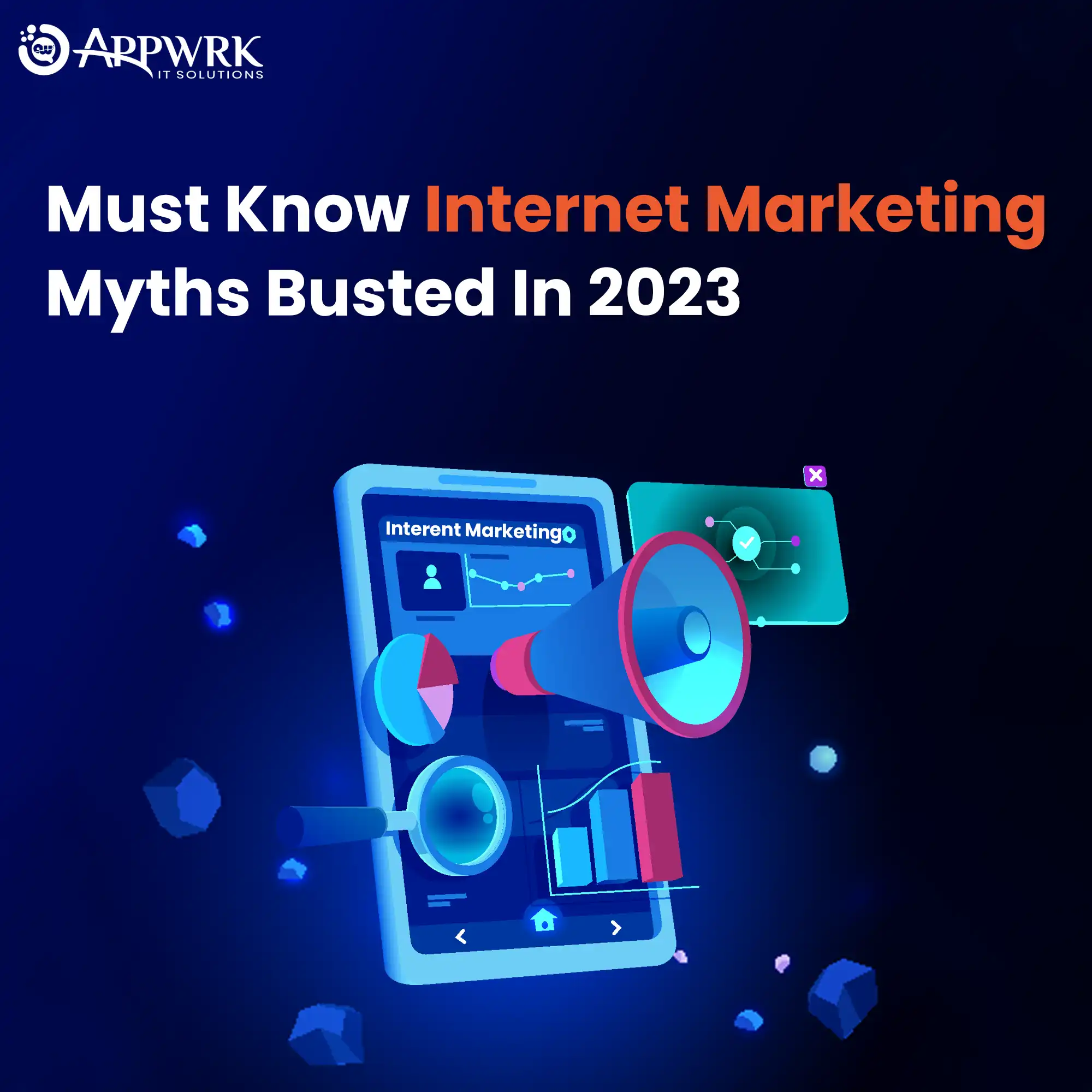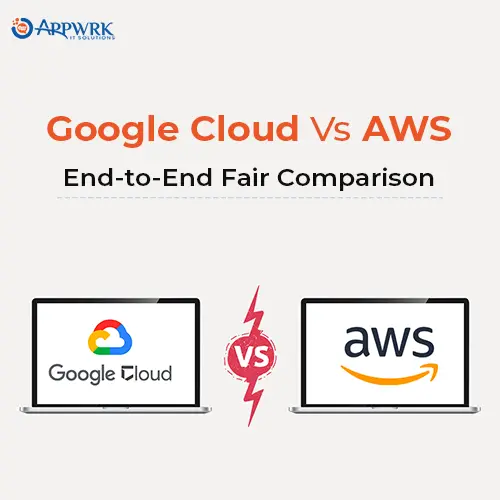10 SEO BEST Practices to Boost Your Website Ranking in 2025
SEO( Search Engine Optimizations) are the guidelines of a search engine. Like you have guidelines in particular exams, you can achieve a high score if you write your paper according to those rules and regulations. Similarly, if you optimize your website as per the guidelines of a search engine, your chances of getting ranked on its first page will increase.
However, SEO practices are never consistent or stable and have to be adjusted & modified timely as per the latest search engine algorithms release and updates. That’s why we have come with this blog to update you on SEO BEST Practices in 2025 to boost your website ranking and increase your business reach.
SEO, i.e. Search Engine Optimization, is one of the most popular and fastest-growing components of digital marketing. However, with proper search engine optimization and good seo practices, you can rank your website on the first page of Google or any search engine results page and increase traffic on your site. But when SEO is used together with PPC, it generates massive leads.
Besides this, various other benefits like great ROI, massive leads generation, brand credibility & trust building, market share securing, and much more can be achieved with best SEO practices.
Want to know how??
Let’s look at the below live stats of Google (at the time of writing this blog)
- Internet users worldwide- Over 5 billion
- Total number of websites- Over 1 billion
- Google Searches – Over 4 billion
Isn’t it amazing? Woohoo!
We can conclude from these stats that your potential customers are looking online for products and services. If your website ranks on Google’s first page, your chances of getting potential leads will increase.
But how would you compete with top-ranking websites related to your services? The answer is pretty simple Google gives preference to properly search engine optimized( SEO) websites.
There are plenty of good seo practices, techniques and other strategies that you can follow to rank your website in the first on SERP. You can’t rank on Google page 1 if you don’t get the basics, such as on-page SEO, keyword research, etc. Only by following SEO best practices, you can ensure the groundwork for your site to enhance its visibility. Hence make sure with your website development company that all the SEO factors are considered while designing your website.
So what you are waiting for? Let’s dive deeper to explore the SEO best practices that can assist your business to achieve a top web ranking on the search engine results page in 2025. Let’s begin!

Table of contents
- Seo Best Practices to Rank Content Higher
- 1. Proper Keyword Research and Usage of Keywords
- 2. Avoid Duplicity, Write Unique Title, Description, and Content
- 3. Optimize Your Site’s Loading Speed
- 4. Optimize Images
- 5. Align your content with search intent
- 6. Improve the User experience of your site
- 7. Get more Authoritative Backlinks
- 8. Work on Title and Meta Descriptions
- 9. Use Internal Linking
- 10. Include Keyword in URL
- SEO Best Practices 2025 : The Conclusion
Seo Best Practices to Rank Content Higher
1. Proper Keyword Research and Usage of Keywords
A keyword is a group of words based on which content is written on a web page. It means a keyword is a word or group of words that describe your post content in the best way. It’s a search term or query that people search for in a search engine( Google). If you want to refine your content and optimise search engine ranking, then adding the right keywords to your text is one of the first and foremost things to do.
Through these keywords, Google understood on which terms/phrases you want to rank pages of your website. Like in the above examples, when we put the keyword- “best cake shop in Pune”, websites that target this keyword in their content will reflect on the SERP. Now you must be thinking there are lots of words/phrases in content then how does Google know on which keyword we want to rank our site’s page. The keyword density of a keyword you’re using are clues for Google. So if you want a search engine (Google) to understand what your page is about, you need to use focus keywords within the limit of Keyword density.
Now the question is which keyword to choose? In order to improve web ranking and optimize your blog properly, you need to choose the right keywords that not only satisfies the user intent of your blog but also has a good search volume.
For that, you can take the help of various free tools such as Ubersuggest, Moz.
- Ubersuggest– It is a chrome extension and a powerful SEO tool. It is free to use and shows the monthly search volume of particular keyword, CPC & competition data.
- Moz– This tool is free to use for limited use. But it is the most accurate keyword research tool, and using it, you can explore over 500 million keyword ideas for your site.
In these tools, you will see the two terms. Those are:
- Search Volume– Number of times a keyword search in a search engine
- Keyword Difficulty– It represents how difficult a keyword is to rank in SERP(Search Engine Result Page)
For example, you are running a bakery store and want to increase your customer’s list through your website. The first approach should be to search for the perfect keyword through which customers can find your business online.
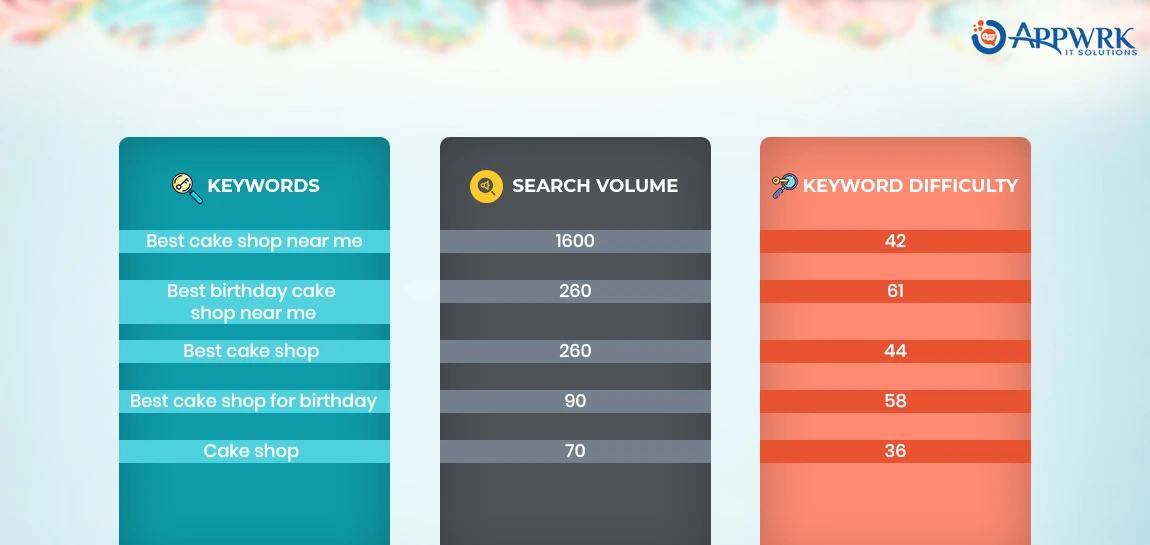
We have taken out all these keywords with search volume and keyword difficulty from the keyword research tool. We have to pick the one with good search volume, and in parallel, the keyword difficulty should be less to rank for the particular keyword. Hence we should use the keyword ‘best cake shop near me.’ When people search for this keyword, all the web pages on which this keyword is focused will display on the SERP. Hence, keyword research and proper usage of keywords play are extremely essential to improve website ranking.
2. Avoid Duplicity, Write Unique Title, Description, and Content

Avoiding plagiarism or duplicate content is one of the crucial SEO best practices to follow in 2025. Google Guidelines on Duplicate Content apply to every content on your website, such as landing pages, image alt text, title tags, category pages, ecommerce product pages, etc. Google has warned not to use duplicate content; otherwise, you will be penalized and not able to rank your site. In addition to avoiding plagiarism and duplicate content, minimizing the use of AI in writing is also considered one of the seo best practices for blogs that can drastically increase site ranking.
How can you avoid duplicity?
You can make your website content 100% original by following the below-given measures:
- Avoid using other websites’ content
- Avoid using the exact similar content on multiple pages of your site
- Use synonyms of the words if you want to repeat content on your website
- Check the content in plagiarism tools, such as Grammarly, plagiarism detector and rephrase those sentences.
- Consolidate duplicate URLs
3. Optimize Your Site’s Loading Speed

One of the best seo practices is avoiding a slow loading website that no user likes to use. If your website ranks based on other SEO best practices, you have employed on your website, but if its loading speed is less, the bounce rate will increase, which will decline your ranking.
According to Google research, if loading time increases from 1 to 3 seconds, the bounce rate increases by 32%. Hence with the increase in loading time, the percentage of people bouncing from your website also increases. It results in a decrease in traffic and a corresponding decrease in Google ranking. This is why improving the page load speed is one of the best practices for seo and can significantly help in retaining users who visit your site.
There are various free tools to check your website speed, such as Google PageSpeed Insights score and GTmetrix.
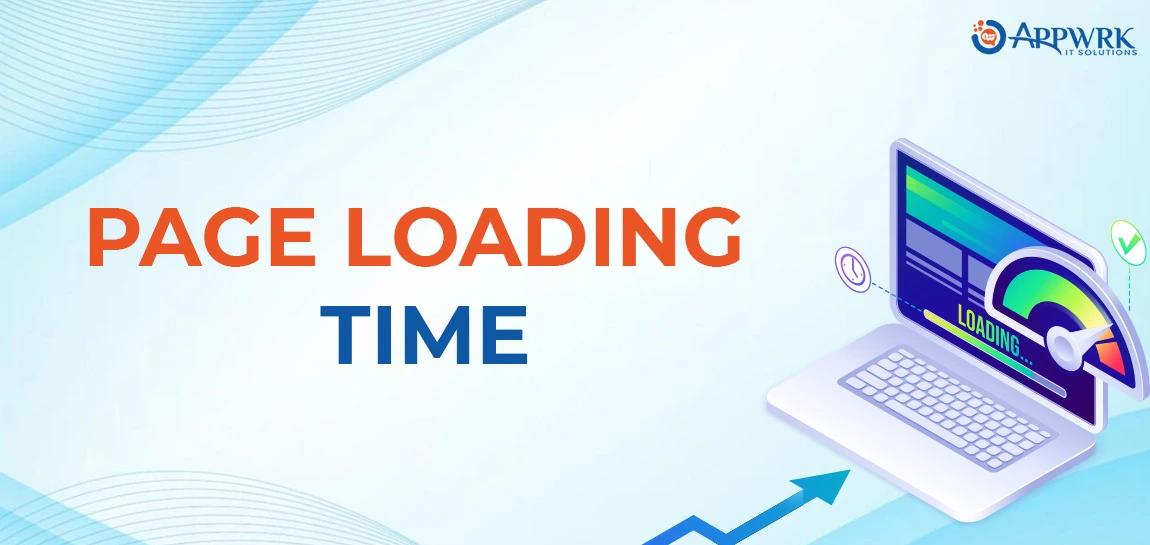
Google PageSpeed Insights Score is a tool that helps you check the speed of a web page. It analyzes a website’s performance and provides suggestions to make it better. The below images show how this tool speaks a lot about a sites’ loading time and performance.
But we recommend the tool GTMetrix for better reviewing the page speed as it provides more insights on your page speed and gives suggestions on how you can improve it. Check out the speed of a website on the GtMetrix tool and useful recommendations it suggests for improvement.
Source:
Important Measures to Improve Your Site’s Speed are
- Minimize HTTP requests
- Minify & combine files
- Reduce server response time
- Choose the performance-optimized hosting solution
- Run a compression audit
- Cache your web pages
- Leverage a Content Delivery Network (CDN)
- Remove unnecessary Plugins
Other than these points, one most important which must be included in your list is “Image Optimization”. Let’s discuss it in detail.
4. Optimize Images
Image optimization not only helps improve page speed optimization but is also considered as one of the SEO best practices to enhance your site ranking in 2025. We mostly optimize the videos on the website because we always have in mind that video takes space, so it needs to be optimized. But do you know images take almost 21% of the overall web page’s weight? Hence after video optimization, optimizing your images is the next best practice for seo which you need to focus on.
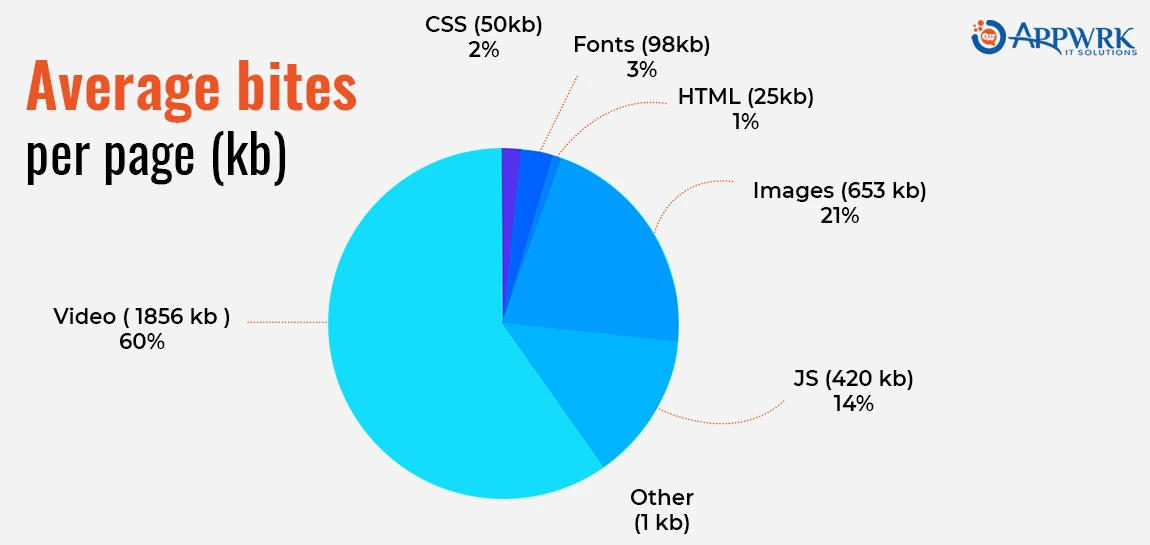
Now, let’s see how we can optimize images? Below are the four ways of optimizing web images.
(a) Choose the Right File Format
When it comes to optimizing images, one of the top seo practices to increase website ranking, it is important that you choose the best file format before you start with modifying the images. The best file formats are:
- WebP is one of the best options, but not all browsers universally support it. WebP lossless images are 26% smaller than PNGs and JPEGs. It supports lossy and lossless compression, along with animation and alpha transparency.
*At APPWRK, when we started using this image format, we have witnessed a 20% increase in our site loading time.”
- JPEG– Here, you can get a good balance of quality and file size. It uses lossy and lossless optimization.
- PNG– It produces higher quality images and has a larger file size. However, it uses a lossless image format, but it can also be lossy.
- GIF– It uses only 256 colours and uses lossless compression. It is best for animated images. Adding text to GIF increases its visual appeal.
(b)Provide Alt Text for Images
Whenever including an image within a blog, it is detrimental that you follow all the blog seo best practices associated with images so that their accessibility is improved largely. One among these best seo practices for google and other search engines is giving alt text to images. Giving alt text to images means giving names to images.
For example, an image of a choco lava cake should be given alt text- choco lava cake or cake of choco lava. These names are for Google to help it understand the content of an image. Only when a search engine understands the content, it will rank your image on a web page in that category. For example, all these below images rank on SERP because they have given alt text-choco lava cake.
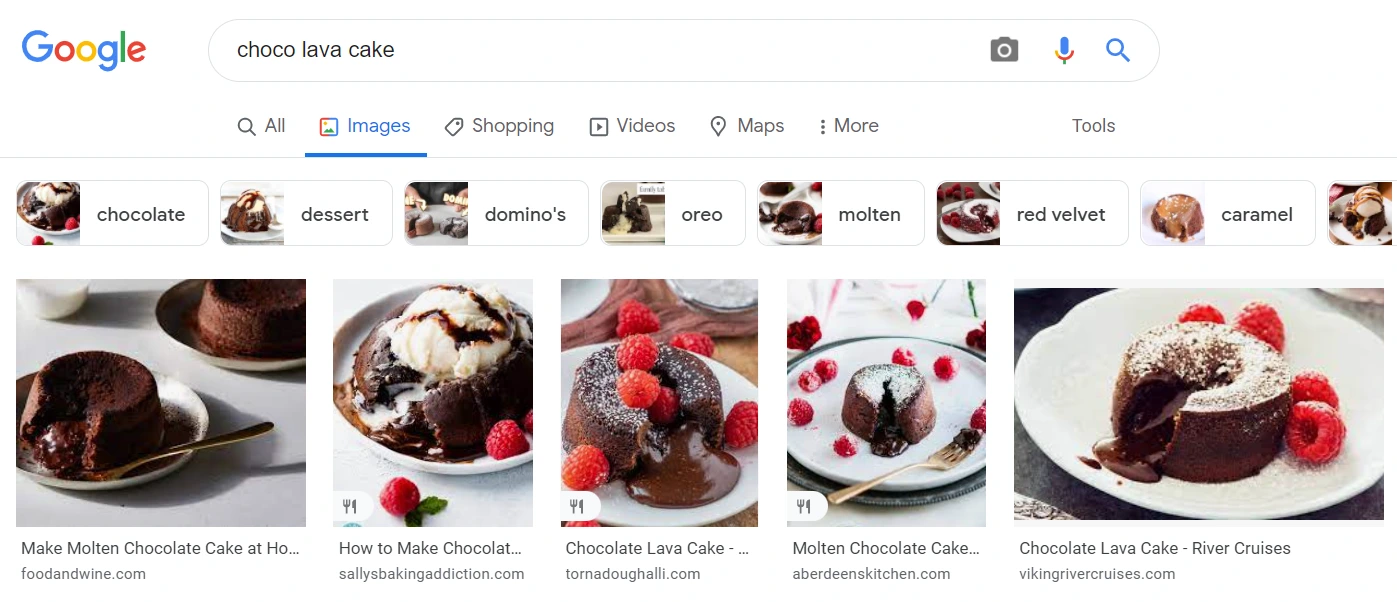
(c) Compress Your Images
You can compress your image before loading them on the website with the help of various free tools out there. Some of the best free tools are TinyPNG, ImageOptim, ShortPixel.
(d) Lazy Load Your Images
Lazy loading means loading first the critical content on your web page and deferring the loading of non-critical resources like images, videos, etc. The lazy load positively impacts performance by reducing the initial page load time and system resources usage.
5. Align your content with search intent
One of the crucial best practices in SEO is to create content that aligns with the search intent of your target audience. If you are not sure, then let’s understand the search intent with an example- When you search for how to make cake in Google, you will see the videos and cake recipes are ranking on the first page and not any cake selling website. Because here search intent is to learn making cake not to buy a cake.

While if you search for ‘buy a cake’, you will see the pages of websites selling the cake are ranking on the SERP. Because here the intent is to buy a cake. With these two examples, we hope it is clear to you that you have to create content that aligns with user intent.

There are four types of search intent, those are
- Informational- When a user is looking for specific information ,for example- “ Who is the first Prime Minister of India”.
- Navigational- When a user is looking for a specific website or app. For example- “Facebook login”.
- Commercial- When a user is looking for a specific product but hasn’t decided yet. For example, “best DSLR cameras”.
- Transactional- When a user makes up a decision to buy a specific product, for example- “buy Samsung mobile”.
We have to understand the intent of a keyword before using it on our web content. If you are selling DSLR cameras, you will not focus on the keyword- best DSLR camera” on your landing page because this search term is commercial-based, not transactional-based.
6. Improve the User experience of your site
Google ranks a particular website based on how the user behaves with your content. Hence improving the user experience by adding highly readable and easily understandable content must be included in the SEO best practices. Your website page speed plays an important role in improving visitors’ experience with your site. Besides analysing page speed, there are some good seo practices like using core web vitals scores to judge your website’s user experience. Those are
- First Contentful Paint (FCP): It measures the time taken when a browser first render any content (text, images, scalable vector graphics, non-white canvas from the document object model (DOM).
- Largest Contentful Paint (LCP): It measures the time taken for the longest piece of content (it may be an image or block of text) to appear on the screen. A good FID score means the site loads fast.
- Cumulative Layout Shift (CLS): It evaluates the visual stability of our site. For example, when a web page is loading does stuff move around the screen and check how more does it happens.
- First Input Delay (FID): It measures the time taken by a site to respond to the first interaction, for example, tap on a button. A good score represents that a site quickly reacts to the input.
Check core web vitals of a website on Google PageSpeed Insight Tool.

In order to get the best seo rankings for your blogs and other pages of your website, it is not enough to just implement content seo best practices but also need to give your users a good experience whenever they are visiting your site. Here are some useful tips to ensure that your users are able to navigate smoothly and have a pleasant experience when coming to your site.
- Use White Space– Do you know that adding white space between paragraphs and in the right and left margins increase user readability by 20%. Hence you must add white space to make your content eye-catching and grab user attention.
- Use Sub-headings- Usage of subheadings, i.e. H1, H2, H3, helps search engines (Google) understand your content better, and your text is more accessible to readers.
- Visually appealing content- People connect with visuals more quickly than text. Hence you should also focus more on explaining your web content through images, videos, and screenshots.
- Avoid using too many pop-ups- Although pop-ups are good to connect with your potential leads, they are considered bad from an an SEO point of view. We advise you to use pop-ups only when it is essential for you, like if you want to grow your email list.
7. Get more Authoritative Backlinks
Backlinking refers to getting links from other websites to your web pages. Out of all the SEO best practices, backlinks are the ones that can’t be ignored if you want to rank your site on top of the first page of Google. If you are looking to rank your website, you must include getting backlinks from a reputable, relevant website with high domain authority as part of your marketing strategy.
Google considered backlinks as votes of relevance and confidence. Hence we say that more the number of links( backlinks) pointed to your website from other sites higher will be your website ranking. Must focus on building backlinks for your website and try to link other reputable websites related to your domain. It will give you another plus point for search engine ranking.
Guest posting is one the most effective way of getting backlinks. It is the process of writing blogs and then publishing them on other websites. While writing these blogs you can add one link that will direct you back to your website. For example, have a look at one of the guest posts published by APPWRK Guest post link-

The highlighted link in the above image is directed(backlink) to one of the web pages of APPWRK.
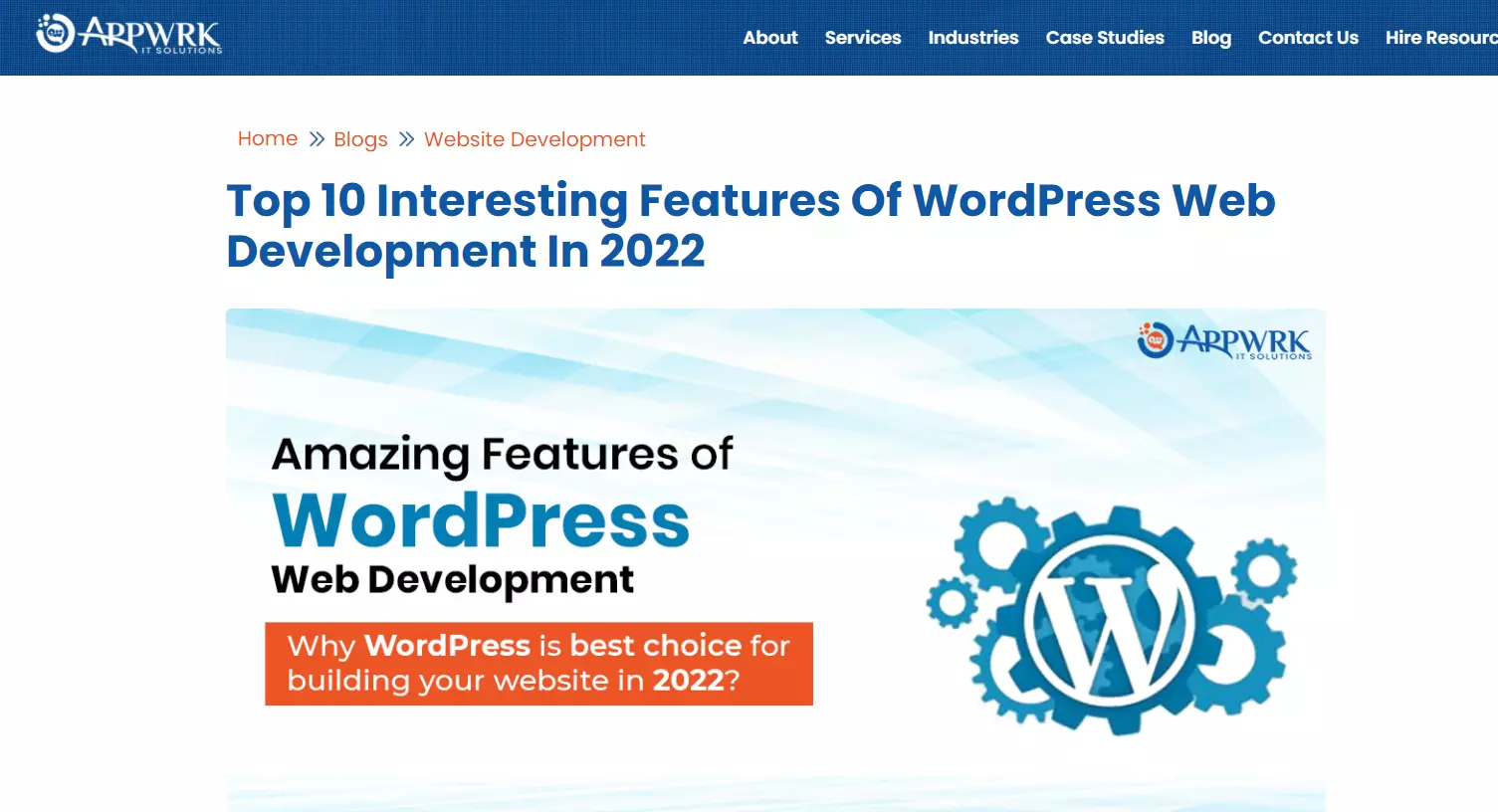
In this way, we at APPWRK are getting backlinks and increasing our website’s authority by doing guest posting.
8. Work on Title and Meta Descriptions
Title and meta description plays an essential role in SEO especially when it comes to grab attention of user on SERPs and increase Click-Through Rate (CTR) . Therefore included in the list of SEO best practices. Let’s talk about each of them in detail.
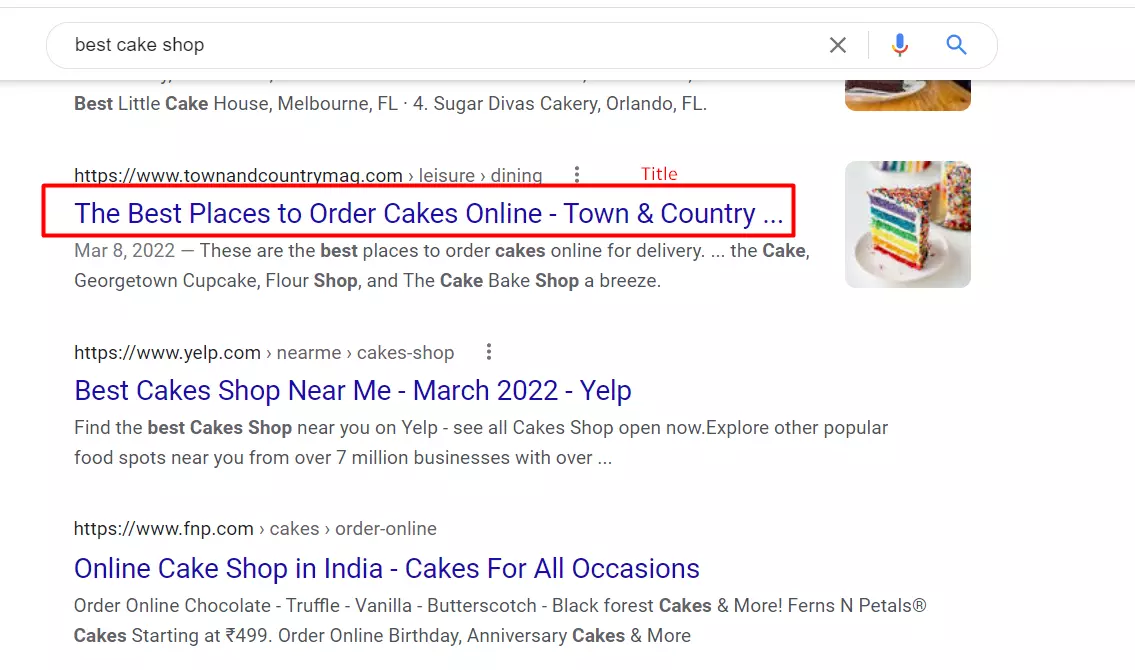
These are the headlines of a web page that is clickable and appears in search results. A title tells the user what they are going to read on that web page, so it should be appealing and informative. Hence they are critical from an SEO perspective. One important point to note here is Google displays only the first 60 characters of a title on SERP, but it is fully shown on the web page. As users see only the first 60 characters, writing a title tag within that limit is better.
Important checklist while creating title tags:
- Keyword should be in the title tag
- A Title should match the search intent
- Avoid duplicity and write unique titles.
- It should be descriptive but concise.
(b) Meta Description

A meta description is a small summary below the respective title on SERP. The meta description provides users and the search engine Google a brief summary of the content on your page so that they know what this page is all about and what users are gonna read in it. Although meta descriptions do not impact ranking, they can influence click-through rates, which ultimately result in more traffic to your site and higher ranking. From an SEO best practice point of view, the meta descriptions should be between 155-160 characters.
Important checklist while writing your meta descriptions
- Keyword must be included in the meta.
- Write unique meta description for each page
- Match with search intent
Screaming frog is one of the effective tools to check the website all meta and tile.
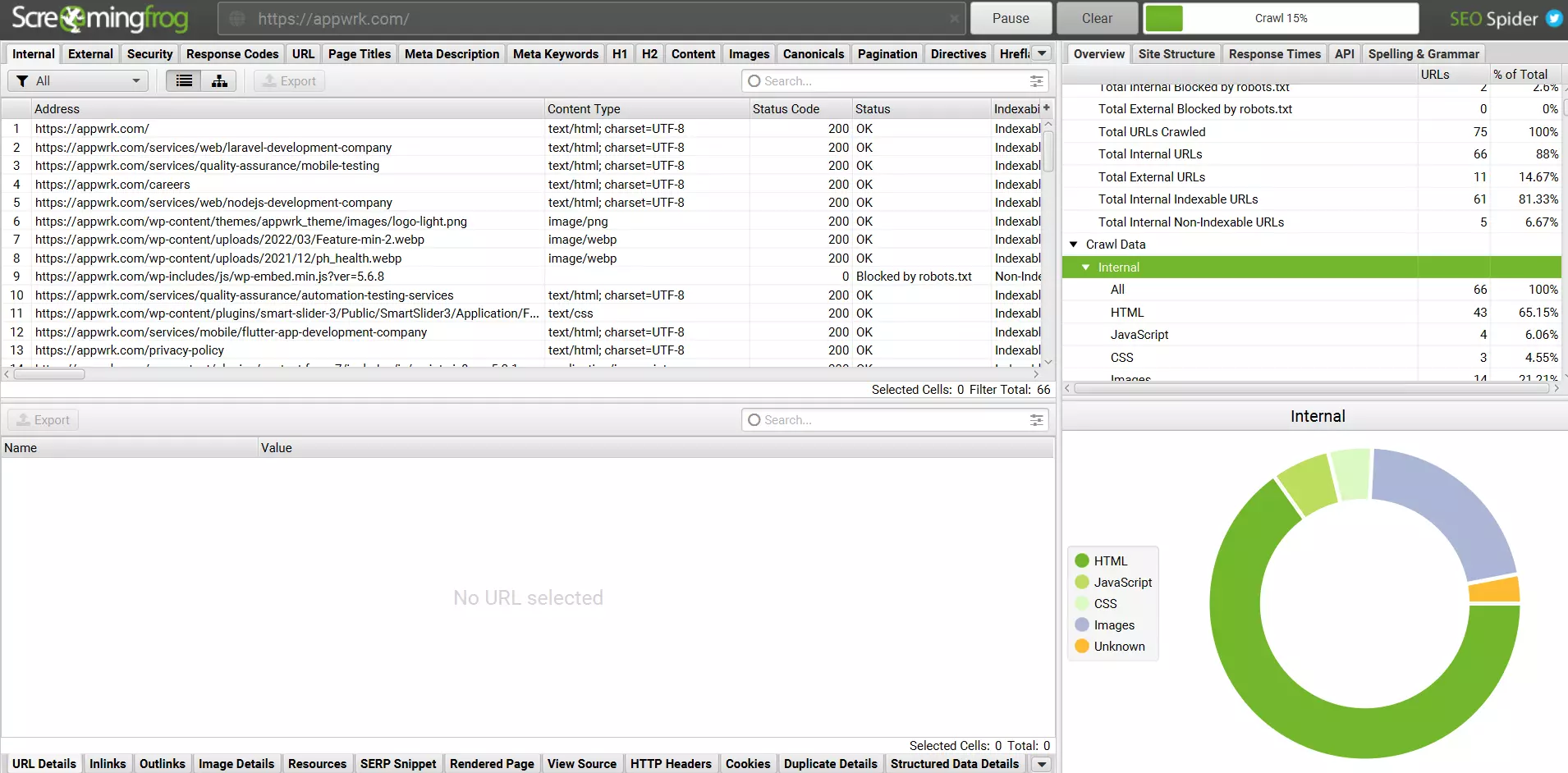
9. Use Internal Linking
Internal linking is one of the easiest but most effective SEO best practices. You just need to add a link from one page of your website to another page of your website. At APPWRK by, adding internal links to our blogs, we have noticed an increase in our web traffic and a decrease in the bounce rate. Check out how we do internal linking.
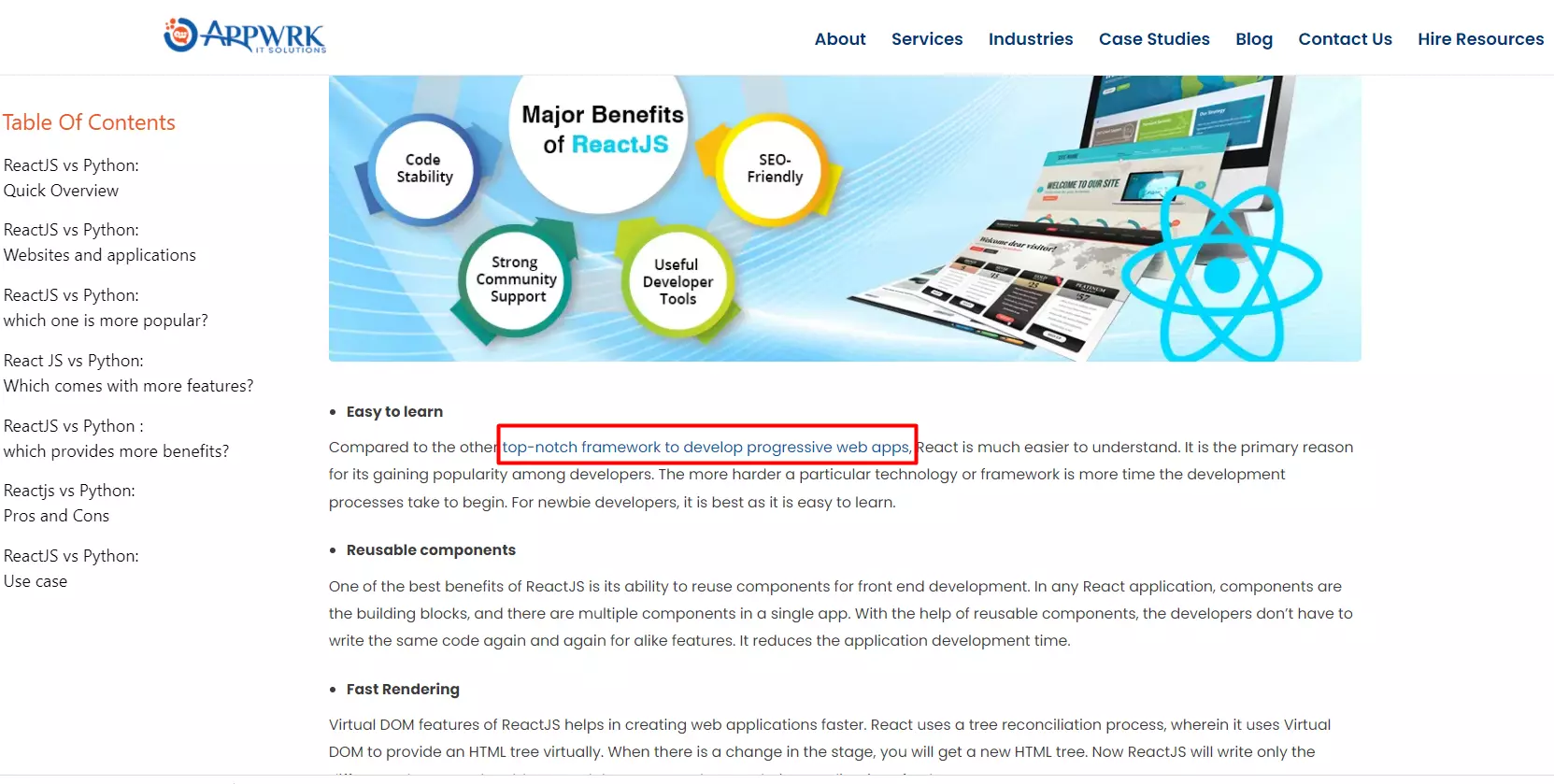
This page is interlinked to the below page.
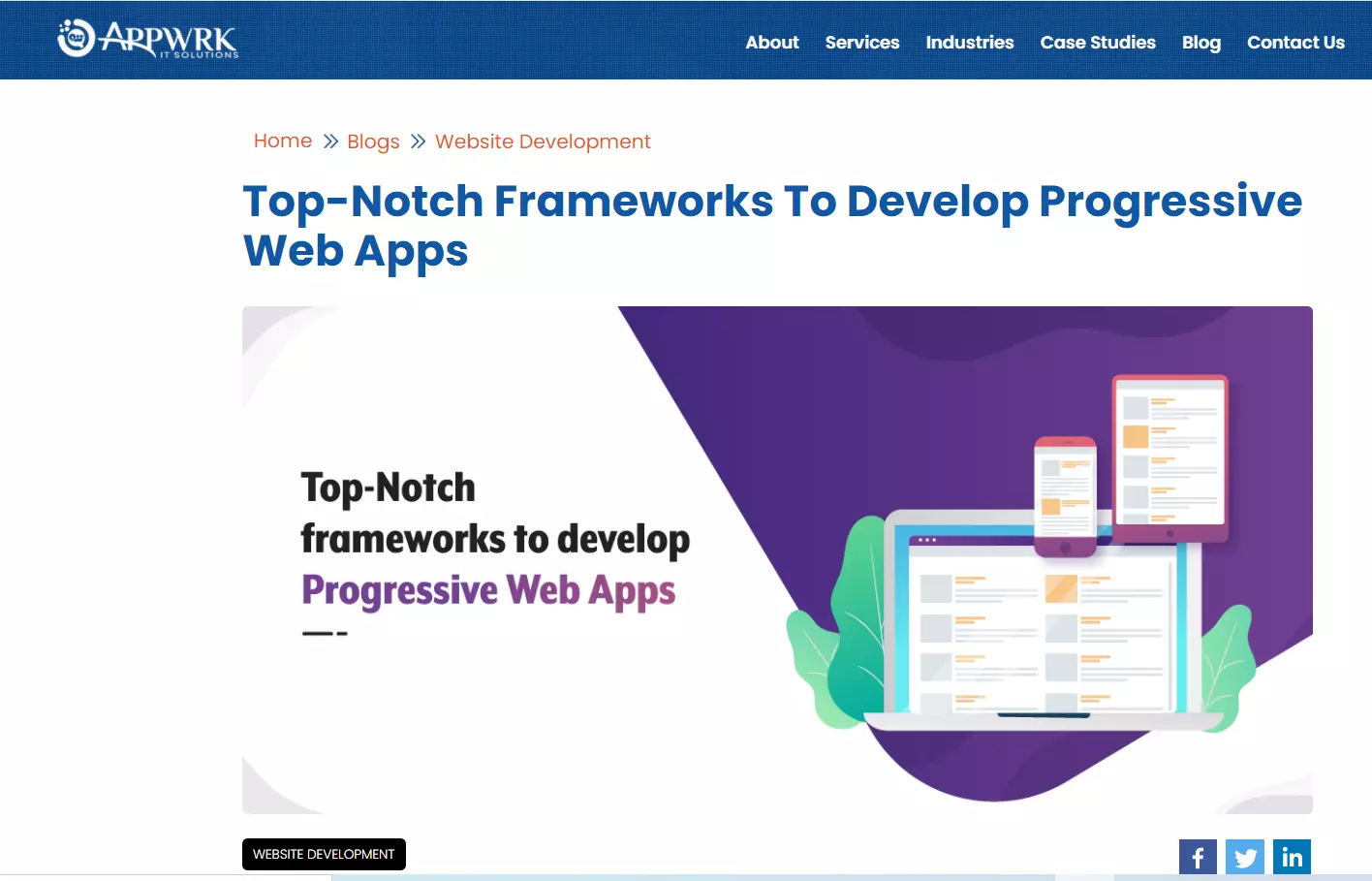
Try to have almost the same anchor text and the text on the page on which you are interlinking (as shown in the above images) as it helps Google understand what each page is all about. Old pages on your website have more authority than new pages; hence you must interlink your new pages to old pages to rank them in SERP.
10. Include Keyword in URL
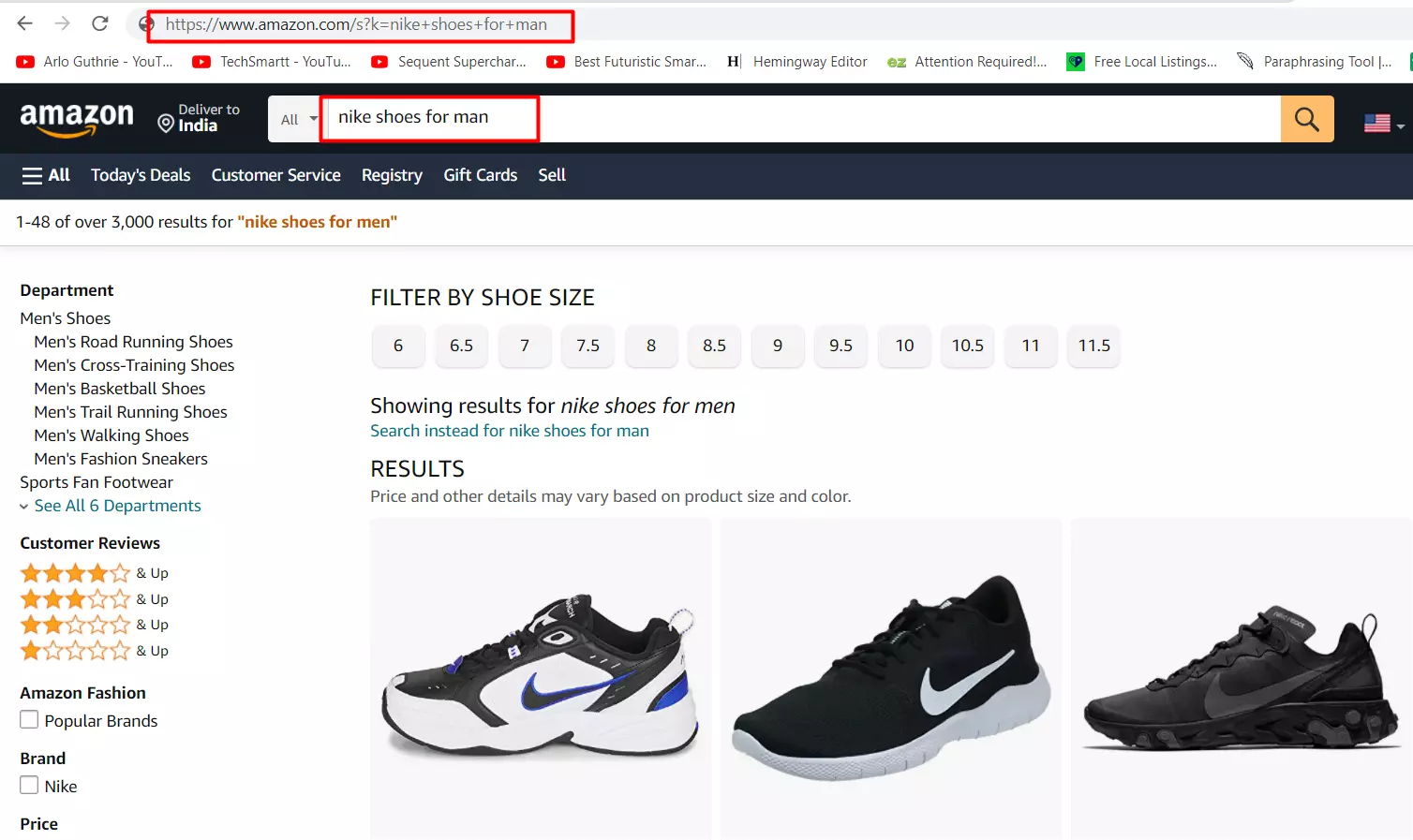
Generally, people ignore URL structure while discussing SEO best practices. But do you know a proper URL structure with focused keywords and perfect word count can also help enhance your website ranking? A good URL structure gives an idea to users and Google what the destination page is all about. Let’s take an example of one of the product pages of Amazon. Check the URL; it includes the website name and content on a web page. Hence just by looking at the URL, a user and search engine understand what this page contains.
Important checklist while creating a well-structured URL:
- Use Short URLs. Because short URLs tend to outperform long URLs on the search engine result page(SERP).
- Must include the target keyword in the URL.
- Remove necessary words and make a simple URL.
SEO Best Practices 2025 : The Conclusion
Google algorithms or guidelines are getting stricter year by year. Hence only by employing SEO best practices you can rank your website in SERP. This blog has covered the best SEO practices to follow in 2025, which you shouldn’t ignore if you want to stand ahead of your competitors. Although we tried to explain each best SEO practice in detail, if you still find it difficult to understand any point, please raise your concern to us. We would love to expand our guide on Search Engine Optimization best practices in 2025.
Frequently Asked Questions (FAQs)
What are some good seo practices to boost website ranking and traffic?
In order to boost the ranking and traffic of your, you need to focus on creating high-quality and keyword-optimized content that satisfies the intent of the users. You also need to make sure that your website is mobile-friendly and has a good loading speed so that it provides a user good experience. Other good seo practices that can help you boost ranking and traffic includes building backlinks from authoritative sources and utilizing social media to promote your content.
How to improve website ranking?
If you would like to improve the ranking of your website in search results, there are several strategies that you need to follow. First, ensure that all your pages are optimized for SEO with proper use of keywords and high quality content. Next, regularly update your content based on new information and work on publishing blogs around your niche. In addition to that, you can also work on securing quality backlinks, having an easy to navigate interface and fast loading times to boost your ranking potential.
How can effective SEO improve website visibility?
Effective SEO which includes optimizing on-page elements such as keyword targeting, meta tags, and content creation aligned with user intent and off-page elements like link-building from reputable sources, social signals, and local SEO practices can improve website visibility by ensuring that search engines recognize the website as authoritative and trustworthy, leading to higher rankings in search results and increased organic traffic.
How to improve site ranking organically?
To improve the ranking of your site organically, you need to emphasize on regularly producing consistent, high-quality content and optimizing your pages for long-tail keywords. In addition to that, you can also improve the internal linking structure and enhance website user experience.
How does content help in supporting seo best practices?
Content is central to supporting SEO best practices because it provides the foundation for keyword optimization, user engagement, and relevance. By consistently creating high-quality, informative, and engaging content, you increase the chances of ranking for targeted keywords. Well-structured content with appropriate headings, internal links, and rich media also helps enhance user experience, which search engines reward with better rankings.
What is good seo?
Good SEO is the practice of optimizing a website in a way that increases its chances of ranking higher in search engine results while providing valuable, user-centric content. It involves both technical aspects, like improving website speed and mobile responsiveness, and creative efforts, such as crafting content that answers users’ questions. Good SEO balances technical precision and high-quality content to drive organic traffic and achieve long-term online success.
About The Author


